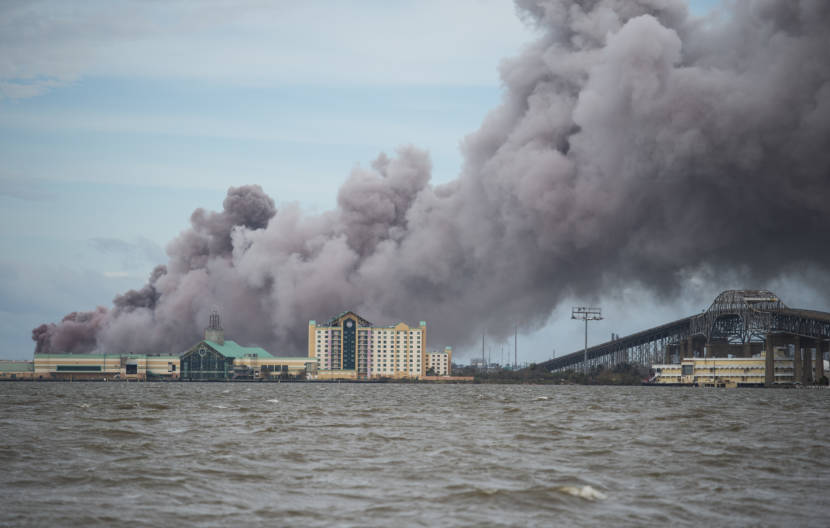
Nearly one third of the hazardous chemical facilities in the United States are at risk from climate-driven floods, storms and wildfires, according to a new analysis by the Government Accountability Office.
The federal watchdog analyzed more than 10,000 factories, refineries, water treatment plants and other facilities that manufacture, store or use dangerous chemicals. They found that more than 3,200 of them are located in places where they face damage from sea level rise, hurricane storm surge, wildfires or flooding from heavy rain.
“Recent natural disasters have demonstrated the potential for natural hazards to trigger fires, explosions, and releases of toxic chemicals at facilities,” the report’s authors note.
The report calls on the Environmental Protection Agency to require facilities to prepare for floods, power outages and other effects of climate change.
Climate-driven storms have damaged numerous chemical plants, refineries and water treatment plants in recent years.
The most stark examples have unfolded during hurricanes. In 2021, Hurricane Ida caused leaks and power outages at facilities from Louisiana to New Jersey. In 2020, Hurricane Laura forced tens of thousands of people near Lake Charles, La., to shelter in place after a local chemical plant was damaged and began leaking dangerous chlorine gas. And, in 2017, flooding from Hurricane Harvey caused massive sewage leaks from water treatment plants, and caused at least one chemical plant to catch fire and burn for days.
Flooding is by far the most widespread hazard, the report finds.
Of the 3,219 facilities located in harm’s way, more than 2,400 of them are at high risk for flooding, according to flood maps produced by the Federal Emergency Management Agency. And in some places the risk may be even higher than those maps suggest, because FEMA does not take into account long-term sea level rise or other types of climate-driven flooding.
Insufficient or out-of-date information about weather risks makes it more difficult for companies to prepare their facilities for the effects of climate change, according to the new report.
The facilities analyzed in the new report are located in all 50 states, Washington, D.C. and Puerto Rico. They are concentrated in the industrial core of the country. Nearly 40% of facilities are located in the Midwest or Great Lakes regions, and about 30% are located in the 14 southern states between North Carolina and New Mexico.
Within each region or state, some people are in more danger than others. The report notes that socially vulnerable people, including poor people, Indigenous people and Black people, are more likely to live near facilities that use hazardous chemicals.
For example, if a flood causes chemicals to leak into the air, or a hurricane causes a fire to break out, the people living nearby are most likely to suffer from pollution exposure while they are also trying to cope with damage to their own homes.
“It’s a terrible nexus of burden and vulnerability,” says Ana Baptista, an environmental policy professor at the New School. “You have communities that are facing a whole host of burdens in terms of pollution exposure, and they may also have less means to evacuate in an emergency.”
The report suggests multiple ways that the EPA can protect people by requiring the companies that own these facilities to prepare for climate-driven weather.
For example, if a chemical plant stores substances that catch fire if they are not refrigerated, then that plant needs to be prepared for the prolonged power outages that climate-driven storms, heat waves and wildfires can cause. Facilities located in flood zones need to make sure that they can keep the water out of sensitive areas.
Such requirements are already included in regulations for facilities that handle hazardous chemicals. But the EPA can do a better job enforcing those regulations, the report finds. For example, the agency could prioritize inspections at facilities that are located next to vulnerable communities and at elevated risk from climate change.
The EPA issued a response to the report saying the agency “generally agrees” with the recommendations and laying out a multi-year timeline for reducing climate-related risk to hazardous chemical facilities.
Copyright 2022 NPR. To see more, visit https://www.npr.org.9(MDEwMjQ0ODM1MDEzNDk4MTEzNjU3NTRhYg004))



